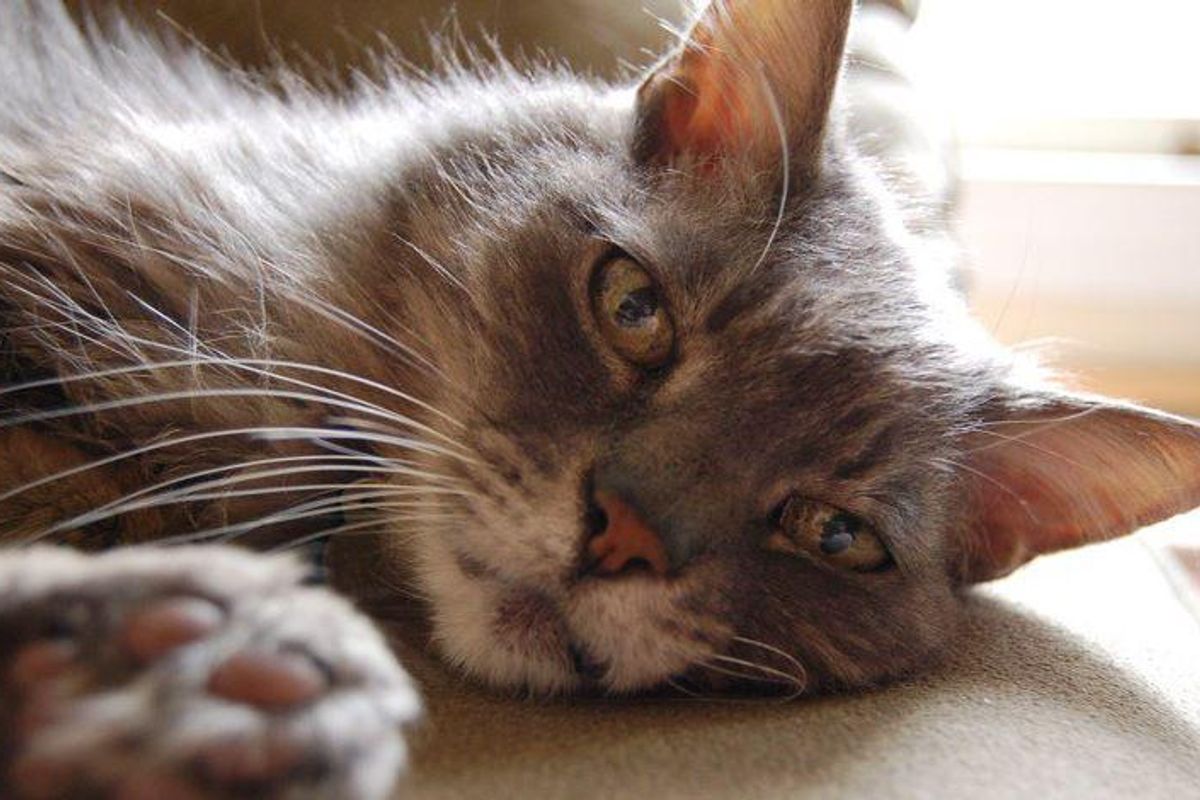Woman saves $28,000 in travel expenses by watching other people’s cats in places she visits
All it takes is 30 minutes of work a day.

Cat-sitting is a job with some major perks.
A woman from Brisbane, Australia, has found a clever way to make her travel dreams come true by doing what she loves—taking care of people’s cats. Madolline Gourley, a 32-year-old writer, estimates she’s saved $28,000 in travel expenses since 2017 by cat- and house-sitting in nearly 50 homes across the U.S. and Australia.
“As a sitter, you house or pet sit for 'free' in exchange for accommodation,” she told Business Insider.
Gourley finds places to stay on house-sitting websites including TrustedHousesitters, MindMyHouse, HouseCarers, Aussie House Sitters, House Sitters America and House Sitters Canada. She documents her travels on a blog, One Cat at a Time.
She believes that she gets the gigs primarily because of her experience with cats.
"If you take out the fact that I'm from Australia, it's not that much different than a friend or a neighbor watching your pet," Gourley told NBC. "Their place is the only form of payment I get."
For Gourley, cat-sitting was a natural fit. “I’ve had cats since I was little and my mum is a big cat fan, too. She’s also had cats all her life,” she told The Animal Rescue Site. “When I found out about the whole house/pet sitting for accommodation thing, I only wanted to do it looking after cats because I’ve only ever cared for cats.”
Her most recent 75-day trip across America was her most adventurous yet. “I’ve looked after 15 cats and nine different homes in seven cities across the country. I started out in Seattle before making my way to Austin, New York City—where I got sits in Chelsea, South Park Slope and Prospect Heights—Salt Lake City, Denver, Chicago and Portland,” she wrote on her blog.
The great thing for Gourley is that cats are pretty easy to take care of, only taking up about 30 minutes of her day. The rest of the time she’s free to be a tourist. She gets a lot of great sightseeing and eating recommendations from her customers.
“Traveling by way of house and pet sitting might come with a few extra responsibilities, but on this trip alone, it saved me thousands of dollars on accommodations,” she wrote. “Reserving 15 minutes of my morning and evening for pet care or house maintenance wasn't much to ask when I had the rest of the day to explore each of the cities I visited.”
Even though her accommodations were taken care of through cat-sitting jobs, the trip wasn’t entirely free. Her American vacation cost about $7,200, or around $96 per day. That included the $1300 round-trip airfare from Australia to the U.S.
Gourley didn’t need to budget for her trip because she gets around $9,000 back every year on her Australian tax returns, which she reinvests into her traveling fund.
People have told Gourley she should write a book about her incredible traveling hack but she doesn’t want to ruin the fun.
"A few people have emailed me saying I should compile a book, and that makes me laugh," Gourley said. "I'll still mull on the idea, but I don't want to invest weeks and months and putting something together ... It's been a pretty cool experience, and an opportunity to save a ton of money."
- Unemployed man's free lawn mowing charity started during COVID ... ›
- Couple moved to tears by violinist on 67th wedding anniversary ... ›
- Trump's Former Spokeswoman, Sarah H. Sanders Announces ... ›
- Stray video game helps raise money for real shelter cats - Upworthy ›
- Storylines offers residential homes on new cruise line - Upworthy ›
- Writer lives in vacation rentals to save money - Upworthy ›
- Cat saves diabetic woman's life - Upworthy ›
- Mom jokes about taking toddlers on vacation - Upworthy ›
- Win an all-expense-paid trip to Patagonia to rebuild trails - Upworthy ›




 These matching bunny ears though.
These matching bunny ears though.  Many adult twins regret that their names are so closely linked together.
Many adult twins regret that their names are so closely linked together. 


